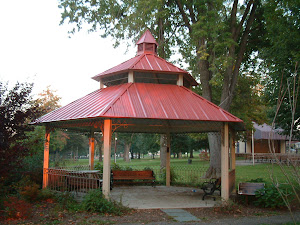Urban legends regarding cheap fuel have been around for years. I can recall one in particular where a tablet of an unknown compound was dropped into a bucket of water which was then dumped into a car and fueled it. Supposedly, the inventor went missing and with him his secret.
Every so often modified cars claiming astonishing efficiency appear briefly but a commercial product never appears in automobile showrooms.
Clean, efficient, and cheap green energy is the Holy Grail of clean-tech companies and they may finally be on the cusp of providing alternatives to the public.
Several years ago published articles appeared regarding Bloom Energy's work on a fuel cell on which tests were conducted using natural gas. My curiosity was piqued as the testing reported the fuel cell to be twice as efficient burning natural gas and it produced lower carbon emissions. Ethanol was also used as a fuel.
Interestingly, from the little I've been able to learn regarding the Bloom Box, no combustion takes place in the process.
Might be a good idea to set your tv recorder for 60 Minutes on CBS Sunday night.
****
Feb. 18, 2010
The Bloom Box: An Energy Breakthrough?
60 Minutes: First Customers Says Energy Machine Works And Saves Money
(CBS) For the past year and a half, several large California corporations have been secretly testing the "Bloom Box," a potentially revolutionary fuel-cell system. Confirming this for the first time, several of the companies report this system is a more efficient, clean, and cost effective way to get electricity than off the power grid.
Lesley Stahl and "60 Minutes" cameras get the first look inside the secretive California company, just days before the Bloom Energy official launch, scheduled for next Wednesday (Feb. 24).
Stahl's report will be broadcast this Sunday, Feb. 21, at 7 p.m. ET/PT.
John Donahoe, CEO of E-bay, confirms Bloom Boxes were installed at his corporate campus nine months ago. The company says the boxes already saved them over $100,000 in electricity bills. "It's been very successful thus far. [The Bloom Boxes] have done what they said they would do," says Donahoe. The five boxes are able to produce five times as much electricity as the 3,248 solar panels that E-bay installed on its campus roofs, says the CEO. "The footprint for Bloom is much more efficient," he tells Stahl.
Google, FedEx, Staples and Walmart are among the first 20 clients Bloom is confirming.
Stahl is the first journalist to be allowed into the Bloom Energy lab and factory where currently one box a day is built. The boxes create electricity by a chemical process that utilizes oxygen and fuel, but involves no combustion. Bloom's founder and CEO, K.R. Sridhar, insists all the materials in the box are cheap and available in abundance. Bloom says each large box - which can power about 100 homes - currently sells for $700-800,000. They hope within five to 10 years to roll out a smaller home version for about $3,000 a unit.
Bloom Energy was the first clean energy start-up Kleiner-Perkins, the Silicon Valley venture capital firm, invested in. They currently invest in about 50 clean tech companies. Sridhar confirms the company has received over $400 million, making it one of the most expensive startups in history.
John Doerr, the Kleiner Perkins partner who invested in Bloom, has high hopes. "The Bloom Box is intended to replace the [electric power] grid for its customer," says Doerr. He thinks existing utility companies should not be threatened or have a problem with Bloom Energy. "The utility companies will see this as a solution.All they need to do is buy Bloom Boxes, put them in the substation for the neighborhood and sell that electricity," he says.
But there is another hurdle says Michael Kanellos, editor-in-chief of the Web site GreenTech Media. Even if Sridhar can mass produce his boxes and sell them cheaply enough, "The problem is then G.E. and Siemens and other conglomerates that can probably do the same thing. They have fuel cell patents," he tells Stahl.
http://www.cbsnews.com/stories/2010/02/18/60minutes/main6221135.shtml
Subscribe to:
Post Comments (Atom)


1 comment:
My only issue with this fuel cell technology is the amount of fuel it requires. According to the inventor, you would use half the amount of natural gas that a power plant requires now to generate the same amount of electricity. In addition to the cost of the box, you would still need to buy fuel, and that cost is quite variable. Also, if you are not in an area with natural gas lines, you would need to use another type of fuel stored in a tank next to the boxes. Not as green as solar, but it's one piece of a solution.
Post a Comment